 ALAN PARADISE
.
January 22, 2023
.
Tech
ALAN PARADISE
.
January 22, 2023
.
Tech
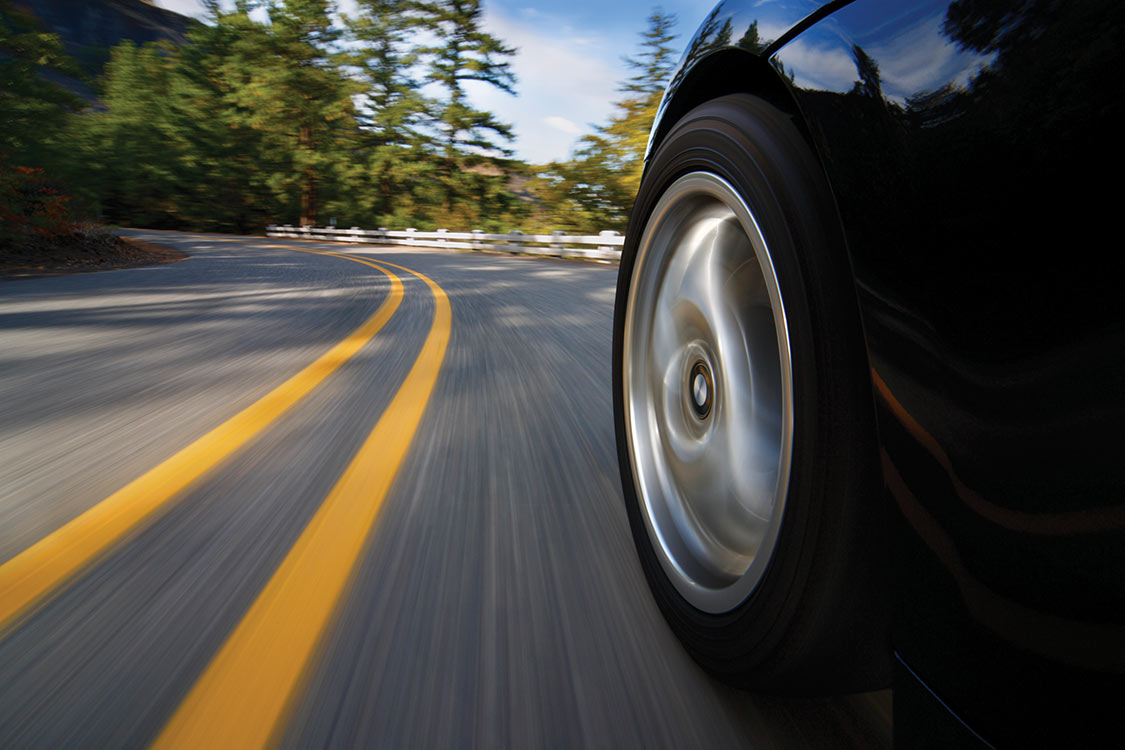
It’s the place we all start: tires, wheels, and suspension. If any single change best defines a performance car, it’s the stance. How a car sits when stationary or acts while in motion is the foundation for all modifications that follow.
It’s been said that tires and wheels make the car. Therefore, it’s equally true that the correct suspension components make the tires and wheels. So why is it that there are so many different opinions about which is the right or ultimate chassis setup? Are the factory specifications optimal or is lower or staggered better? What’s the difference between lowering springs and performance springs? Are performance shock absorbers necessary, and should urethane replace factory rubber bushings? Where should one start? So many questions with few places to get real answers.
There is a highly technical and massively complex engineering equation for obtaining optimum performance suspension geometry. However, “performance” is a subjective term, covering many different arenas, like road racing, drag racing, autocross and day-to-day street driving.
First, let’s break the subject down to its more basic terminology. The primary function of your car’s suspension is to control the handling capabilities by harnessing and distributing the effects of the kinetic energy and heat displacement generated during the movement of the tires, springs, shocks, and bump stops. Simply changing any of these components will have an amazing affect on how all of these parts work together to keep your car between the ditches.
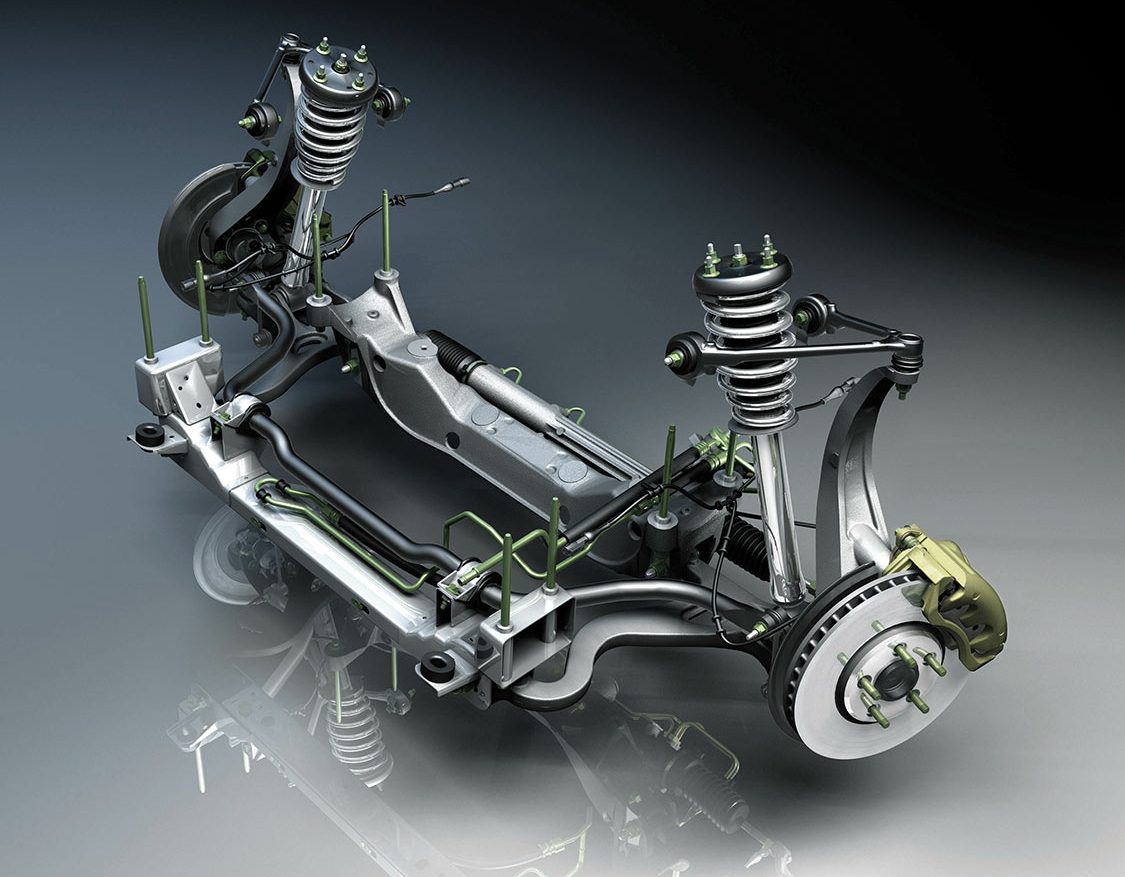
You will never have the ability to fully understand the use and re-use of suspension energy until you first realize the purpose of your car’s suspension. Under ideal conditions the suspension allows for the independent movement of the tires and wheels from the chassis.
Through proper engineering, the chassis absorbs and transfers energy to improve the car’s handling in an effort to optimize road adhesion. During normal driving conditions, the way the original manufacturer intended, the car will maintain vehicle control for the driver and a comfortable ride for the passengers.
The most effective suspension will help maintain road adhesion and in the process assist the driver to achieve optimum control. By improving shock damping, spring rates, center of gravity and suspension travel, a car’s handling can be greatly advanced, especially during extreme and demanding driving conditions. However, everyone has different needs and desires.
Therefore, maximizing your car’s suspension starts by deciding which types of driving you intend to do. A properly engineered performance suspension will deliver improved vehicle stability, quicker point zero rebound, better road adhesion and more responsive driving. This is the place to begin your successful journey to building the performance car you really want.

Springs are the most common aftermarket suspension purchase. This product line represents two areas of vital importance to suspension performance. The first, and most important, asset is superior handling capability over the original equipment springs. Second, and sadly the reason most suspension springs are sold or altered, is that they make the car look better. True, both performance and lowering springs reduce ride height and eliminate wheel well gap, but this should be considered a bonus. Handling is the true benefit of springs.
Because the foundation of performance has been a lower, more track-like stance, many enthusiasts make the mistake of lowering the car with the wrong springs, or worse yet, cutting the factory springs. Greg Cooley of Eibach Springs put it best when he said, “just because a car looks like a race car doesn’t mean it will handle like a race car.”
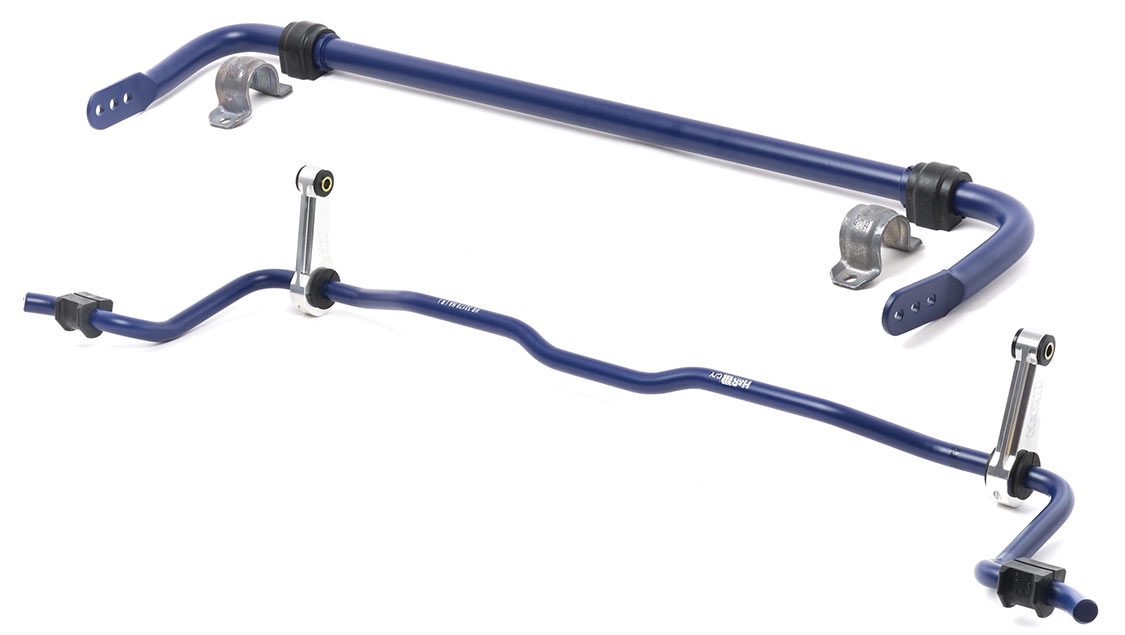
Springs are the load-sensitive components of a suspension. Nearly all front suspensions are equipped with coil springs. Many cars, especially late models, have coil springs on all four corners. Coil springs come in a variety of rates and heights. However, with all of the hype, claims and misinformation, there are only two basic spring configurations, linear rate and progressive rate.
Linear springs maintain a constant rate throughout each winding. This is the most typical type of spring. Nearly all original equipment springs are of linear design. These springs are less expensive to develop and manufacture. From an aftermarket standpoint linear springs are also easier to produce and can be made to lower a car beyond the point of progressive rate springs.
Progressive rate springs are engineered to deliver varying rates in the upper and lower windings with improved damping during compression and rebound. They are also stiffer than linear designed springs and are generally regarded as performance by nature.
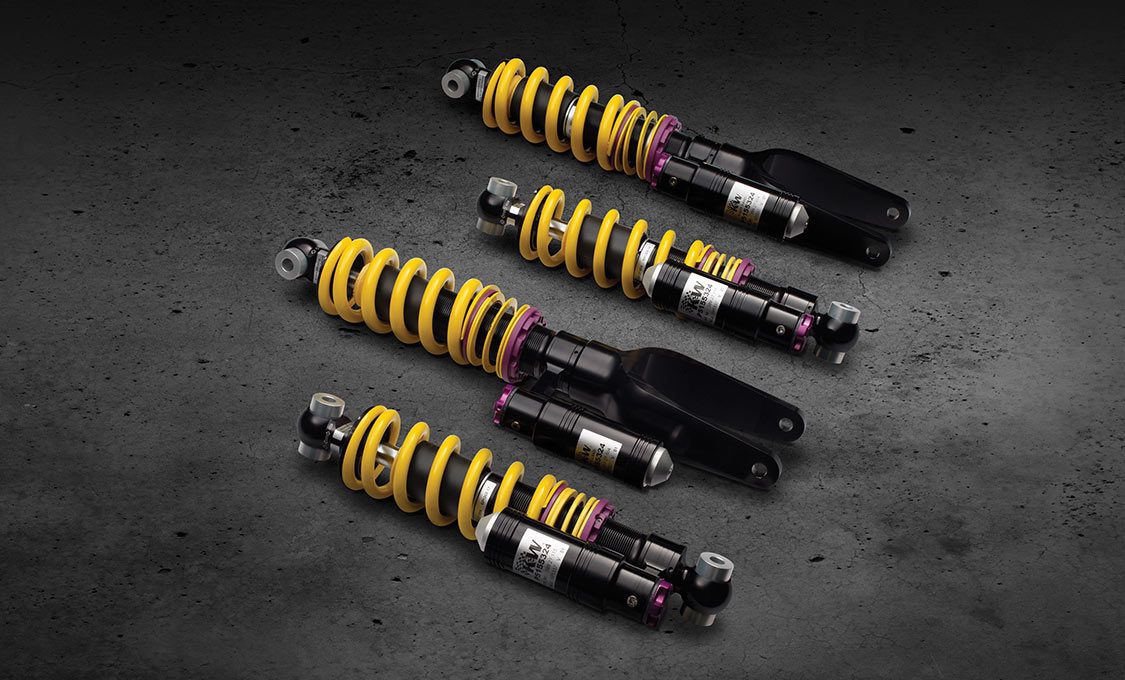
Now that you understand the two types of springs, it’s easier to understand the two marketing categories of springs, performance and lowering springs. The biggest difference between the two is best summed up by a simple definition of each. For the most part, performance springs are designed to help your car realize its optimum handling capabilities. Lowering springs are made to offer a more drastic reduction in ride height. To decide which is right for you, first determine if you prefer to have your car perform or look like it performs.
There is no wrong answer, just personal preference. Should you do most of your performance driving while cruisin’ Main Street, you will be well served installing lowering springs. If you are into a little weekend competition, performance springs are better suited to your needs.
No matter what your interests or activities, the worst thing you can do is cut your factory springs. Roland Grath of H&R explains, “Cutting your factory springs will result in spring rates that are impossible to determine. In addition, without precision forming or cutting equipment, each spring will be cut slightly different. This will give you, at best, unbalanced handling. It could be a very dangerous situation.”
All too often muscle car owners lower a car beyond safe levels. When a car sits too low, spring and shock travel are reduced to a point that both become ineffective. When this happens the only device left to absorb the kinetic energy is the bump stop. That is not a good thing.
Bump stops are the suspension’s compression components. When there is no shock damping or spring travel remaining to buffer the energy force, the bump stops are called upon to handle the impact. Tires, springs and shocks are designed to absorb and rebound energy, when bump stops are needed to manage this energy, it should be under the more extreme conditions, not during every day driving. Constantly running on the bump stops will result in a high rate of chassis fatigue.
Although most suspension experts agree that performance suspension lowering is .75 to 1.75 inches, you can lower your car as much as 3 inches (some applications even more) using coil-over springs and struts.
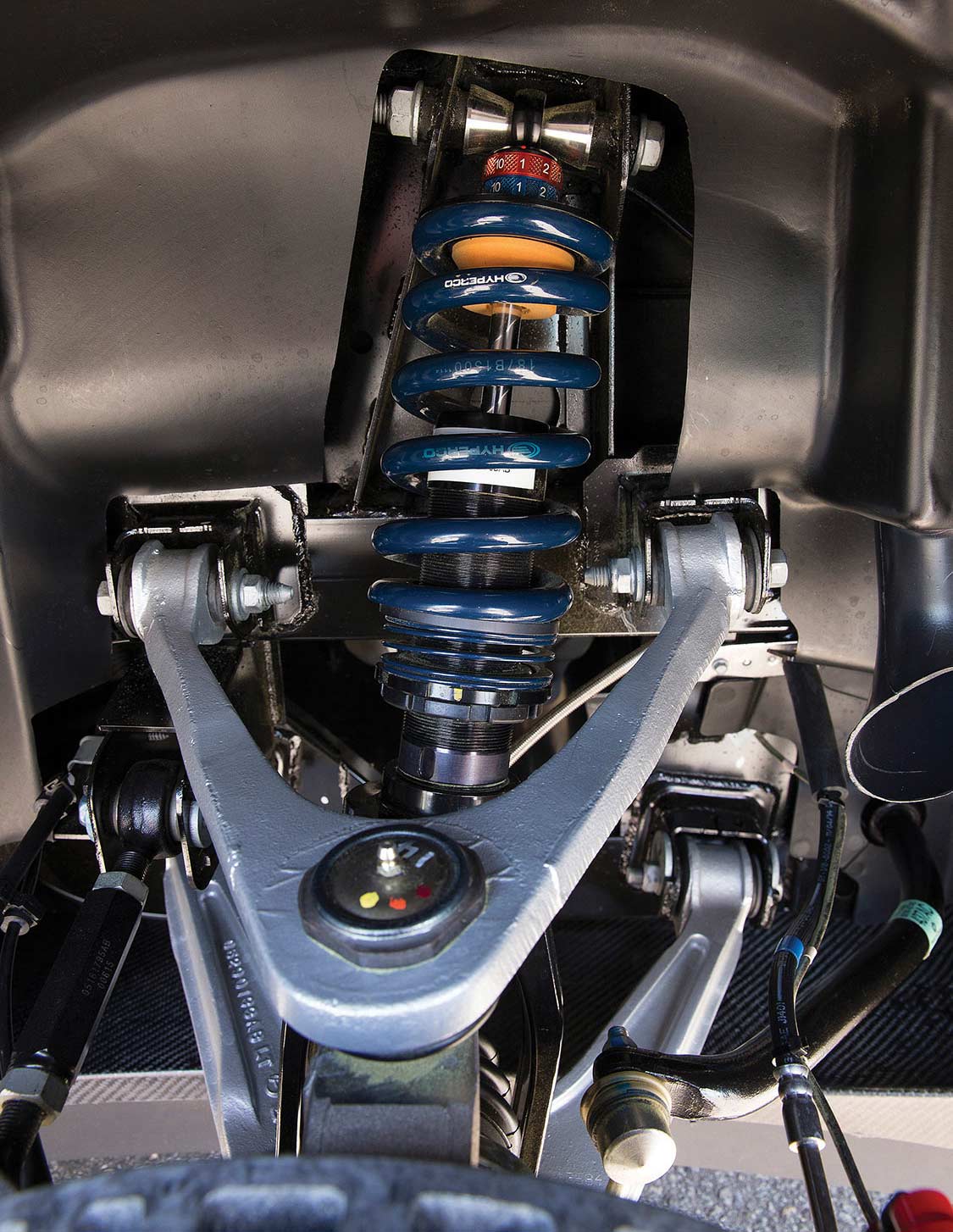
Installing coil-over springs is the high-tech way to achieve performance and appearance in one package. Coil-overs are specially designed springs and struts engineered to work in harmony. The struts have adjustable perches allowing you to vary the spring travel and stiffness and in the process lower or raise the ride height.
At one time coil-over springs and struts were considered extreme. Costing three or four times as much as performance springs, coil-overs were out of reach for the average enthusiast. However, over the past few years the selection has broadened as more companies have developed coil-over spring/strut packages. This has brought the cost down to a more reasonable level, but be aware that not all coil-over sets are created equal. It may be wiser to consider quality over price.
With all of this lowering going on, there is one other factor to keep in mind, the more you lower your car, the more severe your alignment problems become. For most applications, .75 to 1.75 inches of lowering will keep you within factory alignment tolerances. If you lower your car beyond the recommended levels, an aftermarket alignment kit will likely be necessary.
These usually consist of recalculated front A-arms and longer rear trailing arms. Without the proper alignment, premature tire wear will occur, especially on the inside portion of the tread face. In addition, the handling features you spent all that money for will not be fully realized when the alignment is out of spec.
After installing aftermarket performance springs, the next improvement should be performance shocks absorbers. What many enthusiasts fail to understand is that performance shocks are as vital as performance springs to achieve maximum handling improvements.
Shock absorbers are speed-sensitive devices created to control the unwanted movement of the springs. It’s the shock absorber, not the springs, that maintain the contact factor between the tires and the road.
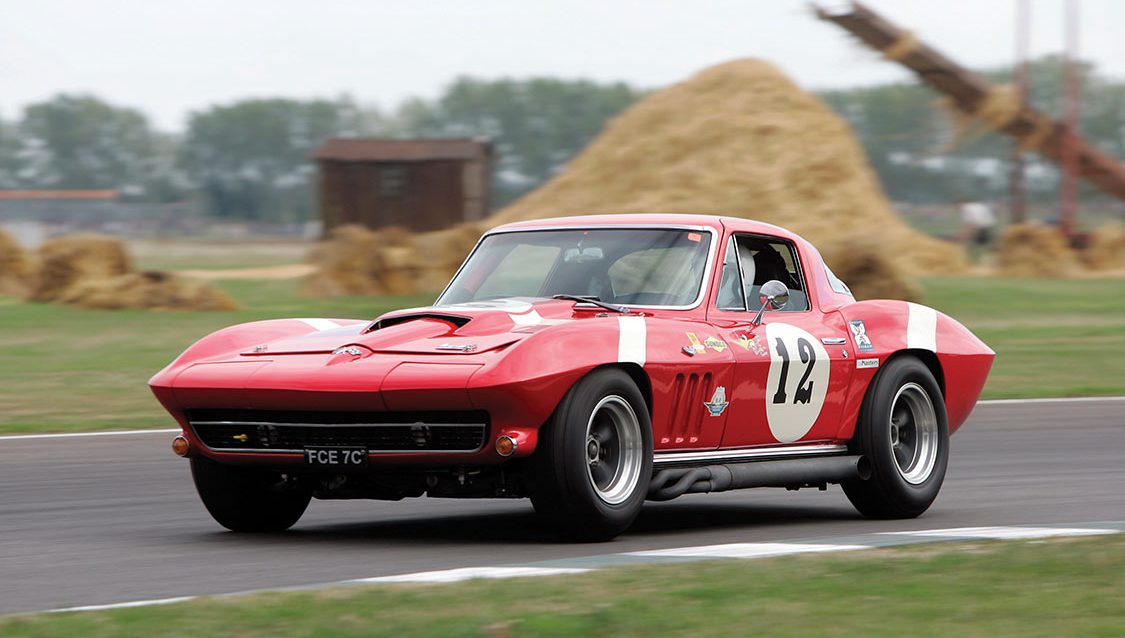
When the suspension encounters a bump, the tire deflects and absorbs some of the energy created. The remainder of the energy becomes chassis movement. So where does the extra energy go? The force of this movement combined with the weight of the tire, wheel and brake forces the spring to compress.
The spring stores this force and converts it to potential energy. This energy has to go somewhere and that somewhere is a full and complete rebound. The energy now returns to the tire, bringing with it the tremendous momentum created by the weight of the vehicle. This energy dance continues until all of the energy is released. The suspension components that tame this force are the shock absorbers.
Shocks work to keep the tires on the road by effectively halting the vertical motion of the car. When a bump is encountered, the vertical motion meets resistance by two forces, the spring and the shock. When the wheel is rapidly moving up or down, the shock handles the resistances with a force of its own. No longer is the spring the only component asked to store the energy caused by the bump.
Springs that reduce ride height, either performance or lowering, shorten the distance the suspension travels. This reduced distance is reflected in shock travel. Shock absorbers are engineered to control bounce by valve rate. When ride height reductions are performed, the shock absorbers are affected. When a shock is over compressed, bumps cause the shock’s rod to force unreasonable pressure on the internal valve rate. Continued use results in damaged shock seals, destroying the handling and ride quality value of the shock.
Shocks must provide proper damping force during rebound to control the springs. They must also possess enough compression to help springs keep compliance with the road and maintain tire adhesion. Original equipment shock absorbers are not designed to accommodate performance and/or lowering springs. Lacking in valve capacity, factory shocks cannot control the forces caused by stiffer, shorter springs. Performance shocks and struts are engineered with valve ratings that work in conjunction with lower springs. Therefore, these shocks allow you to take full advantage of the performance springs and tires.
In addition to being speed sensitive products, shocks are also heat-dissipating devices. Heat breaks down the oil-based fluid in shocks; therefore, when heat is reduced or deflected, shocks work in a more efficient manner. When selecting performance shocks, the first place to start is gas-pressurized models. Pressurization almost completely negates the effects of cavitation (foaming of the oil).
For more precise handling under varying conditions, adjustable shocks are the answer, such as those from Tokico, Koni and Bilstein.

There are many features to consider before selecting performance shocks. From a visual basis, nearly all brands appear the same, as casings and packaging are similar. However, it’s what’s inside the fancy boxes and slick casing that makes the difference. Quality of material as well as construction technique are key elements to superior performance shocks. Compare the piston, rod guide, seals and oil used.
The next stop on this quest for performance is bushings. For a century, automakers have used rubber bushings for production cars. Rubber is a low-cost compound that efficiently absorbs vibration and doesn’t require the fit to have close tolerances. While rubber bushings respond well during everyday driving, these bushings have limitations in performance applications.
Rubber bushings are more likely to be displaced during demanding driving. When hard cornering or rapid acceleration takes place, rubber bushings can cause suspension components to lose their precision geometry, making each less effective.
The second factor to keep in mind is that rubber bushings break down over time with exposure to chemicals, moisture, grit and dirt. Petroleum-based fluids or contaminants don’t affect polyurethane compound. It can be formed in varying degrees of hardness from toy-like slim to golf ball hard. To achieve these or any level in between requires the product to be formed to exact tolerances.
For many performance enthusiasts polyurethane bushings offer an answer; however, there is a price to be paid. Polyurethane bushings will compromise ride quality, making it harsher and less comfortable. Rubber is superior to polyurethane in absorbing noise and transferring energy.
In addition, it isn’t advisable to replace rubber bushings with polyurethane on an as-needed basis. It’s highly recommended to do so all at once. This is especially important with engine and transmission bushings. For example, SN95 Mustang manual transmission mount bushings have a chronic failure rate, most notable by a clunk sound during shifting. This isn’t a difficult or expensive problem to remedy.
However, replacing the transmission mount with polyurethane and leaving the engine mounts with factory rubber bushings can cause undo stress on the engine mounts as they flex and compress at much different rates. This same condition holds up for suspension components. Remember, for every action there is an equal and opposite reaction. If you upgrade one, upgrade all.
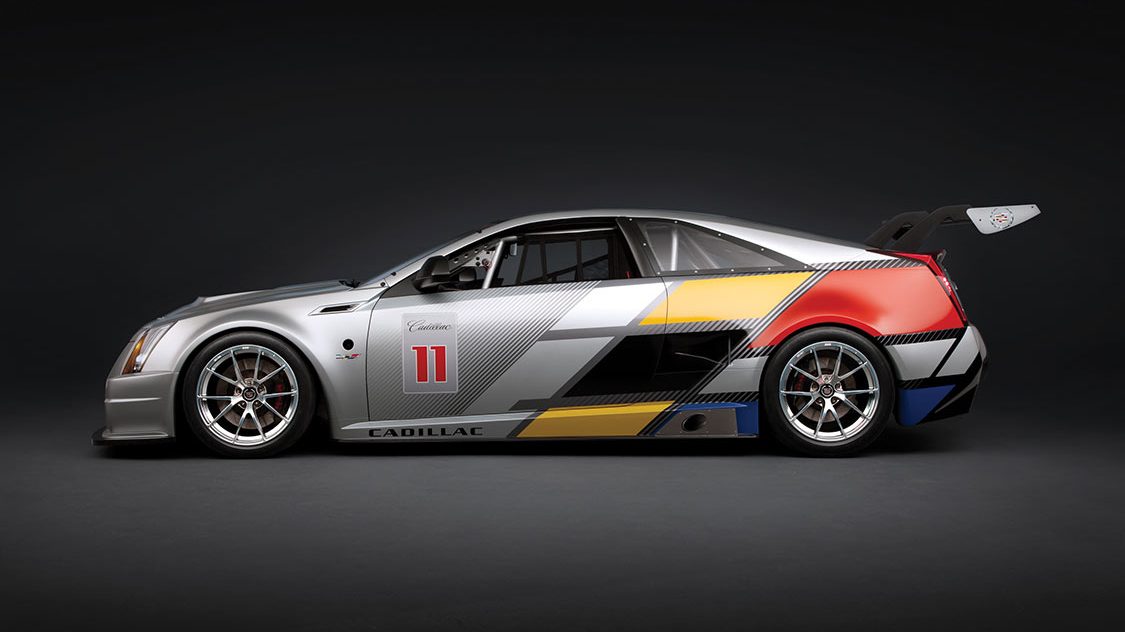
If you want to really feel the difference in cornering, install performance anti-roll bars. Anti-roll bars (sometimes referred to as sway bars) are designed to increase driver control. These bars can be solid or tubular. Both tie two lower ends of the suspension together to make independent suspension movements less independent. Reducing body roll provides quicker transitional response. This is the elusive factor that brings a car back to point zero after cornering. By bringing the car back to point zero, the following corner can be more aggressively attacked.
Anti-roll bar stiffness is determined by three factors: diameter, overall length and movement length. The larger in diameter the bar the greater the increase in roll stiffness. Stiffness can also be adjusted by shortening the movement length.
Most cars are factory-equipped with small diameter front anti-roll bars. These are fine for mass consumers; however, if you want better performance, these small bars do little for you. Premium packages, such SRT, SVT and SS models, feature larger anti-sway bars. In fact, anti-sway bars are the easiest suspension upgrade to perform and therefore the first item when an OE offers a performance package. Improving after the fact, for most makes and models, requires only a few tools and about 60 minutes of time.
After tying the lower suspension together, the next step is to install an upper strut tower bar. These bars bind the upper strut towers together for increased stability and chassis stiffness. The designs of upper strut bars are simple and straightforward. Fasteners secure the strut/spring assembly at the top of these tunnels. The upper strut tie bar links the two struts together. There are also upper strut tie bars that connect to the body’s cross member located at the firewall. This triangulates support for even greater stiffening. These improvements can be installed quickly and easily within a few minutes.
So far everything we’ve talked about has to do with improved cornering and superior driver control on the street, but what about drag racing?
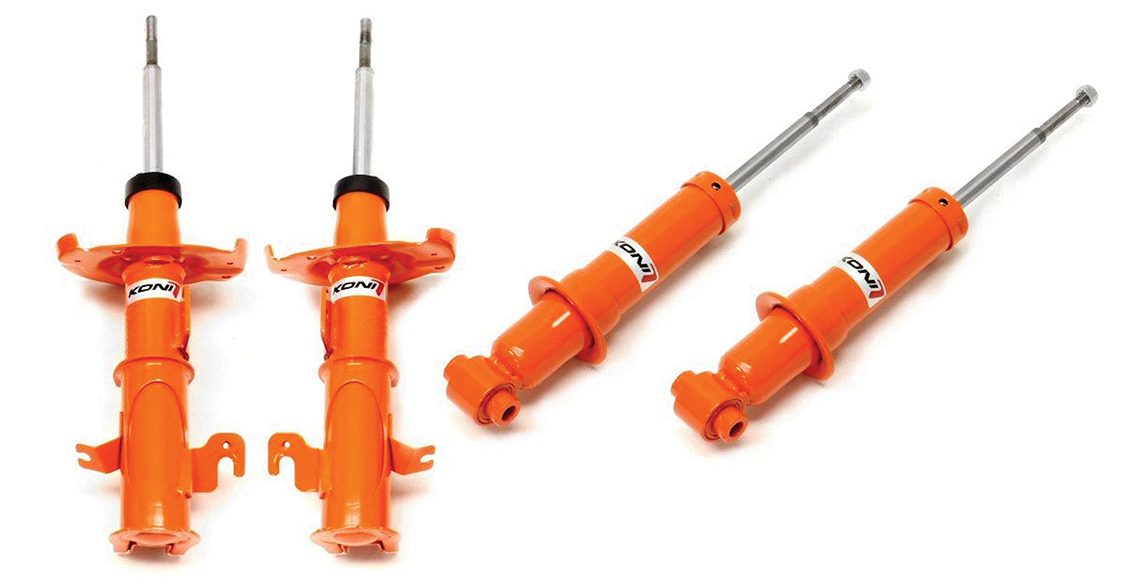
During rapid acceleration, weight is naturally transferred from the front of the car to the rear. As acceleration takes place, the force of power over gravity sends downforce to the rear-drive wheels. To keep weight transfer to the rear tires, special shocks and springs were developed to assist in optimum weight transfer.
What makes these springs special is the unique rate engineered into them. These springs have a rebound factor that helps keep the car’s weight over the rear wheels on sudden acceleration. By keeping the nose of the car from rebounding too soon, weight transfer is maximized and traction and control is retained.
One of the most misunderstood suspension products is coil-over springs. Coil-over spring packages are coil springs on struts that feature threaded adjustments. This allows you to dial in the amount of stiffness and lowering to accommodate different needs. What makes coil-over springs misunderstood is how to set them up for your specific driving conditions.
Coil-overs are ideal for multi-function users. For daily street driving a 1- or 2-inch suspension drop is perfect, supplying good ride quality and excellent handling. For solo racing, depending on track conditions and surfaces, you can turn down the spring/strut combo to achieve stiffer suspension tension or raise the combination for more travel.
If you absolutely must have coil-over springs, research the brands carefully. Not only should the spring rates be precisely engineered, the materials used should be of the highest quality also. With the correct rating and highest quality materials, the final cost will be substantially less than repairing tweaked, broken or damaged suspension parts.
If you are enough of a performance handling enthusiast to absorb this entire article, then you now know the importance of each of the aforementioned components. However, the true key to all of this information is learning how to assemble the elements to achieve handling that can scare the heck out of anyone in the passenger’s seat.
Editor’s Note: A version of this article first appeared in the March 2017 print issue of the Drive Magazine.
Share Link